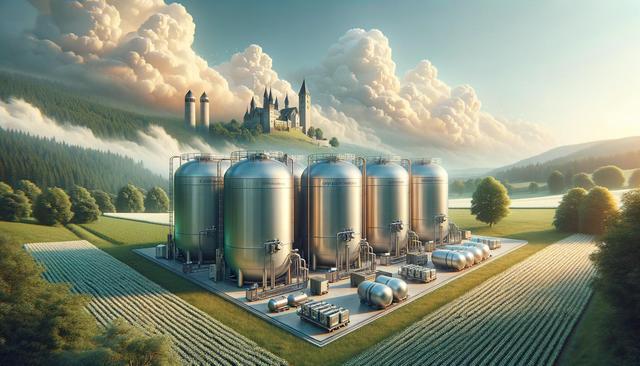Adoption of Cryogenic Systems Across European Laboratories
European laboratories have increasingly turned to cryogenic systems to support a wide range of applications, from biomedical research to industrial preservation. The demand for high-performance cryogenic tanks in Europe has grown steadily, driven by the need for secure long-term storage of sensitive biological materials. Whether it’s for storing cell cultures, genetic samples, or pharmaceutical compounds, these systems provide the low-temperature environment necessary to maintain sample integrity.
Research institutions and medical facilities across Germany, France, Switzerland, and the Netherlands rely on cryogenic storage systems to manage critical assets. The use of liquid nitrogen tanks in Germany is particularly prevalent in clinical laboratories, where temperature stability is vital. Across the border, cryo storage in France supports a large number of research centers focusing on genetics and biotechnology. These facilities typically require:
- High-capacity liquid nitrogen storage tanks
- Automated inventory systems for sample tracking
- Temperature monitoring and alarm capabilities
As the technology evolves, cryogenic systems in Europe now offer more efficient insulation, energy-saving features, and scalable storage options tailored to the needs of both small laboratories and large biotech companies.
Medical Applications and Cryogenic Storage in Switzerland
Switzerland, known for its advanced healthcare and pharmaceutical sectors, has embraced cryogenic storage for numerous medical applications. Hospitals and clinical research organizations use medical cryogenic tanks in Switzerland to store vaccines, blood components, and stem cells. These tanks are essential for maintaining consistent ultra-low temperatures critical for preserving biological activity and viability.
Medical cryogenic systems are designed with safety and reliability in mind, often including:
- Backup power systems to prevent temperature fluctuations
- Seamless integration with hospital data networks
- Compliance with stringent European health and safety regulations
In addition to clinical use, Swiss biotech firms employ cryogenic tanks for storing biologics and cell therapy products. As personalized medicine becomes more prominent, the demand for secure and scalable cryogenic storage solutions is expected to rise. These systems offer a controlled environment that supports ongoing innovation in the life sciences field.
Technological Developments in the Netherlands’ Biotech Sector
The Netherlands has emerged as a hub for biotechnology innovation, and with that comes the need for advanced cold storage infrastructure. The use of biotech cryogenic freezers in the Netherlands is common among startups and research institutes working on cell and gene therapies. These freezers play a crucial role in ensuring the viability of samples throughout development, testing, and production phases.
Recent technological advancements have improved the design and functionality of cryogenic systems. Many modern units now include:
- Digital temperature regulation and monitoring
- Remote access for real-time control
- Compact designs for space efficiency
As the biotech sector continues to grow, so does the need for reliable cryogenic infrastructure. These systems are not only used for storage but also for transport of sensitive materials across international borders. As a result, companies looking to buy cryogenic storage in Italy or other parts of Europe often turn to suppliers offering customizable solutions suitable for multinational operations.
Regional Trends in Cryogenic Storage and Infrastructure
Across Europe, the cryogenic storage landscape is shaped by regional needs and regulatory standards. Countries like Belgium have seen a rise in demand for cryo lab storage to support their expanding pharmaceutical and academic research sectors. Belgian laboratories, in particular, focus on sample management efficiency and regulatory compliance, leading to the adoption of fully automated cryogenic systems.
Germany and France, with their well-established research institutions, prioritize storage technologies that combine safety, scalability, and energy efficiency. Meanwhile, Switzerland and the Netherlands continue to invest in cutting-edge cryogenic infrastructure to support their growing medical and biotech industries.
The market for cryogenic tanks in Europe is becoming increasingly specialized, with manufacturers offering tailored solutions for different environments. Some of the most requested features include:
- Vapor-phase storage to minimize liquid nitrogen exposure
- Modular tank designs for flexible expansion
- Integrated data logging for compliance
These regional differences underscore the importance of selecting cryogenic systems that align with specific operational needs and local regulations.
Choosing the Right Cryogenic Storage Solution
When selecting a cryogenic system, European laboratories and biotech firms must consider several factors, including storage capacity, temperature range, and automation level. The increasing complexity of biological research and the growing emphasis on regulatory compliance have made it essential to choose systems that offer both performance and reliability.
Some of the key considerations when evaluating cryogenic storage options include:
- Storage volume and tank footprint
- Ease of maintenance and operational support
- Integration with existing laboratory systems
- Safety features and emergency handling protocols
Vendors offering cryogenic systems in Europe are now expected to provide end-to-end solutions, from installation to maintenance and technical support. This is particularly important for multinational companies with facilities across borders, including those looking to buy cryogenic storage in Italy or expand existing infrastructure in regions such as Belgium or Switzerland.
Ultimately, choosing the right system means balancing operational requirements with long-term sustainability and compliance. With the growing role of cryopreservation in modern science and medicine, investment in robust cryogenic storage is becoming a critical part of laboratory planning and development.
Conclusion: Supporting Innovation Through Secure Cryogenic Storage
As the demand for reliable low-temperature storage continues to grow across Europe, cryogenic systems have become essential infrastructure for laboratories, hospitals, and biotech firms alike. From liquid nitrogen tanks in Germany to medical cryogenic tanks in Switzerland, the availability of advanced storage solutions is supporting groundbreaking work in healthcare, research, and industry. Whether the goal is to preserve critical medical samples or support large-scale biotech production, European organizations can benefit from the evolving capabilities of cryogenic storage technology.
By understanding regional trends and aligning with local regulations, stakeholders can make informed decisions when investing in cryo lab storage in Belgium, biotech cryogenic freezers in the Netherlands, or any other type of cryogenic tanks in Europe. The right system ensures not only sample safety but also operational efficiency, enabling continued innovation across a wide range of scientific fields.




Leave a Reply